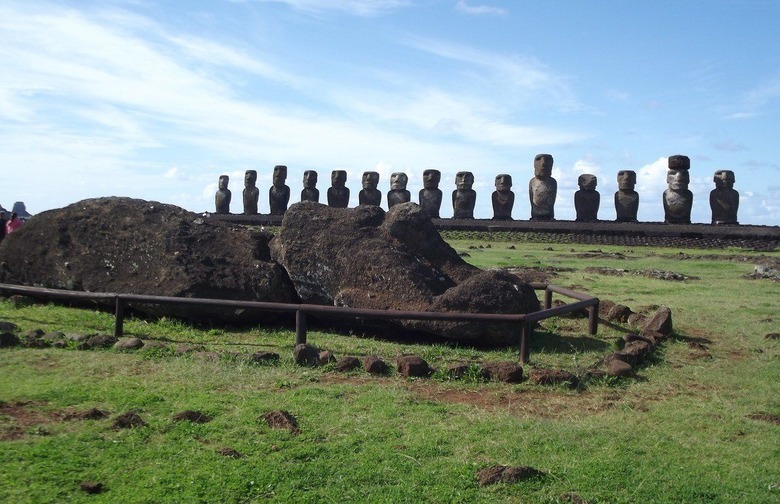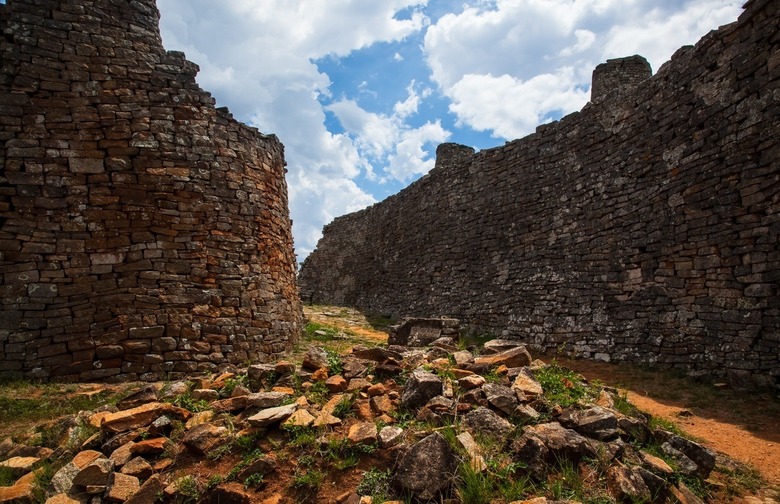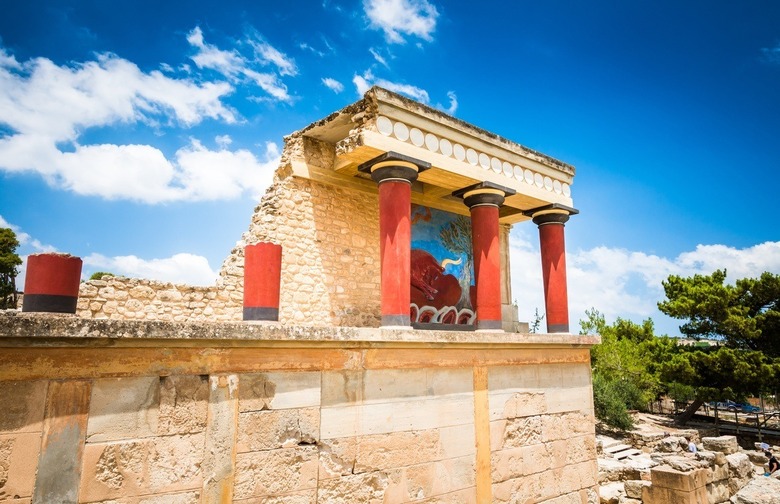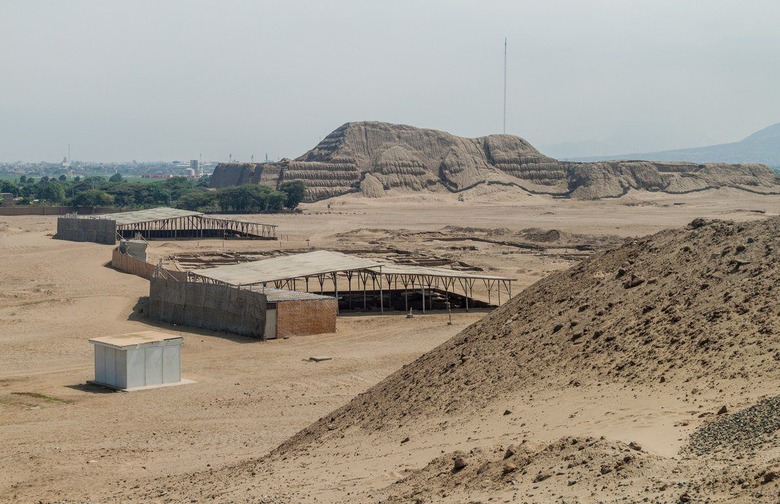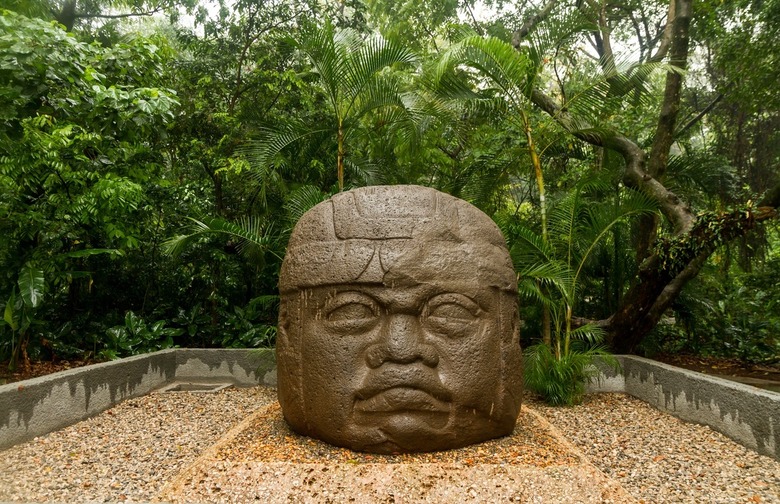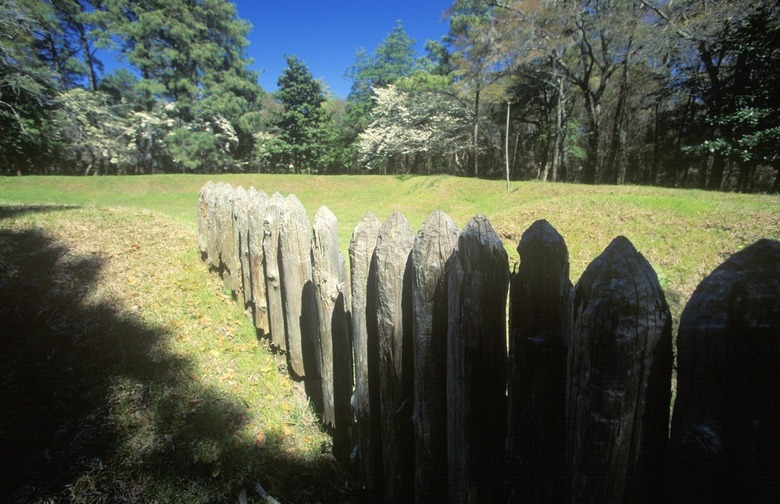7 Eerie True Stories Of Lost Cities And Civilizations (Slideshow)
If you thought we, as Americans, have a great grasp on our continent's history and its inhabitants over the last 1,000 years or so, then you thought wrong. Take the Cahokia Mounds State Historic Site — the remains of a Native America city founded around 600 CE, located in present-day Illinois and Missouri. We know that a complex and sophisticated society once existed here, complete with markets, meeting places, advanced agricultural processes, complex architecture, skillful artwork, and numerous large, earthen mounds. What we don't know, however, is what became of the some 40,000 inhabitants.
Was Cahokia the site of America's first caffeinated drink? Click here for the answer.
For unknown reasons (overhunting, deforestation, and flooding have been proposed), the population declined in the thirteenth century, and by 1300 the site was totally abandoned. To reiterate, the city of Cahokia went from boom to bust in under a century — and this event only occurred 700 years ago. To give you an idea of the magnitude of this lost civilization, it's worth mentioning that Cahokia remained the largest city ever built in the United States up until the 1780s, when Philadelphia's population expanded beyond 40,000 people.
Easter Island
There's a delicate balance of what we know and don't know about the people who first settled on Rapa Nui, better known as Easter Island. We don't know where exactly they came from or why they left, although they likely hailed from somewhere in Polynesia and landed sometime between 700 and 1100 CE, around the same time the first settlers arrived in Hawaii — possibly linking the two events and peoples together.
Click here for the 101 best restaurants in Latin America and the Caribbean for 2016.
The most famous achievement of Rapa Nui's early inhabitants is the construction and transportation of some 887 enormous stone statues while the civilization allegedly thrived. A mystery for some time, historians now believe the heavy carvings (weighing an average of 14 tons each) were transported via giant logs, which were also cleared to make room for agriculture and burned for fire. When they ran out of wood, the island's inhabitants burned grass out of desperation, and by the time the first Europeans reached the island in 1722, it was almost completely barren. At least, this is the popular explanation for the demise of the early population. Another suggests a few stowaway rats led to a vermin population boom that quickly overtook the island and depleted it of its natural resources instead. Scientists and historians still debate the exact cause to this day.
Great Zimbabwe
The name "Great Zimbabwe" is no lie, as this former African city was once home to some 12,000 to 20,000 people and positively thrived as the capital of the Kingdom of Zimbabwe, a center of trade, religion, art, and architecture. However, the before and after parts remain mysteries.
Click here to see what happened when an elephant crashed a safari dinner party.
It is unclear who, exactly, built this monument, with ethnic groups such as the Gokomere, Ziwa, Shona, Venda, Lemba, or one of their ancestors all claiming credit. An even bigger mystery is that of its demise. For unknown reasons, the site quickly declined and was abandoned around 1450 CE. A decline in trade, exhaustion of natural resources, famine, and political instability have all been listed as possible factors, but thus far no evidence has been satisfactorily conclusive.
Minoan (Crete)
The Minoans were an Aegean civilization founded on the island of Crete, the largest of the Greek isles. Often referred to as Europe's first great civilization, they showed much promise and power in the Early Bronze Age (3500 to 2600 BCE) when centers of commerce appeared, art and architecture improved and yielded palaces of increasing complexity, and a Minoan language and writing system was developed — although it remains indecipherable to this day. What we do know, is that something happened around between 1700 and 1450 BCE that essentially wiped the Minoans off the face of the planet.
1500 BCE wasn't a good time to visit Greece, but today is. Here are a few reasons why.
Historians and scientists speculate the downfall was due to a natural catastrophe — possibly an earthquake or volcanic eruption — but the details remain unclear and unconfirmed, as the dates don't add up. Whatever the cause was, it was substantial enough to destroy palaces in locations such as Mallia, Tylissos, Phaistos, Hagia Triada, and Knossos and decimate the population. When the Mycenaean people set up shop on Crete around 1400 BCE, the area had been almost completely abandoned for some time.
Moche (Peru)
Located near the present-day Peruvian cities of Moche and Trujillo, the Moche civilization flourished from around 1 to 800 CE, as evidenced by the rich iconography and monumental architecture that has survived until today. Although often referred to as a single entity, the Moche territory was actually divided linguistically into two separate but related tongues, and some of the art and architecture display differences as well. However, when it comes to the eventual demise, these two sub-cultures were united, as somewhere around the sixth century CE they both disappeared. Scholars have generally pointed to environmental chance as the most likely factor, pointing to a possible super El Niño that may have caused 30 years of rain and flooding followed by 30 years of drought. Not only would this have destroyed agriculture and architecture, but it likely shook the faith of the uber-religious Moche, who thought they were guaranteed stable weather thanks to sacrifices.
Click here to see why Peru is, and always has been, the culinary capital of South America.
However, other evidence supports the claim that the Moche survived into the seventh century, which could potentially rule out specific environmental factors and instead point to fortifications as indications of political or social unrest.
Olmec (Mexico)
The Olmecs weren't just any old Mesoamerican civilization, they're the earliest known civilization in all of Mexico. After popping up between 1400 and 1200 BCE, the Olmec established a class system, religion, a calendar, beautiful art (including the enormous carved heads and other luxury artifacts for which they are best known), grandiose architecture, and possibly a writing system, while expertly terraforming the land to meet their needs.
Click here for the 25 best restaurants in Mexico for 2016.
But then, sometime between 400 and 350 BCE, the population drastically declined and the Olmec quickly became extinct. Environmental factors are generally blamed — specifically tectonic upheavals or volcanic activity — but no specific incidents have been tied to the decline and the same land was soon repopulated by new cultures. Although these later civilizations displayed Olmec influence, they were clearly different peoples and gave no hints regarding the mysterious demise of the area's previous inhabitants.
Roanoke
The Roanoke Colony isn't technically a civilization, as it only existed for a handful of years and wasn't a complex society, but considering the fact that it's often referred to as "The Lost Colony," we felt compelled to include it. For some background, the enterprise was originally financed and organized by Sir Humphrey Gilbert, an adventurer, explorer, parliament member, and soldier who drowned in 1583 during a failed attempt to colonize Newfoundland. Perhaps this should have been taken as a sign.
Click here to see why Roanoke, Virginia (the new town, not the old) is an example to our nation.
Yet Gilbert's half-brother, Sir Walter Raleigh, pressed on with the mission and he and Sir Richard Grenville established a colony on Roanoke Island (now Dare County, North Carolina) in 1585. The two soon returned to England but sent friend and pioneer John White, along with additional prospective colonists, to check on the settlement in 1587. They suspiciously found nothing but a single skeleton on the site, but nevertheless re-settled Roanoke, with 115 colonists staying behind and White returning to England for help. However, the Anglo-Spanish war made passage back to Roanoke difficult, and it wasn't until 1590 that White could return via a privateering expedition. Once again, he found the settlement deserted with no signs of any of the men, women, and children, and no indication of violence or a struggle. The only clue was the word "CROATOAN," the name of a local tribe, which had been carved into a fencepost. The two main theories are that the colonist either relocated or were slaughtered, but sufficient evidence to support either claim was never found.

